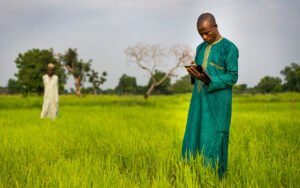A special type of insurance called microinsurance has been created to help low-income individuals and groups obtain financial protection that they may not have access to through regular insurance. Microinsurance seeks to protect people from many hazards, such as health problems, crop damage, accidents, and natural disasters, by offering low premiums and an easy-to-understand process.
This coverage saves the lives of economically disadvantaged people by protecting their limited resources and providing them with a safety net when they need it. Microinsurance has become an important way to keep economies strong and improve people’s quality of life in many parts of the world, especially in areas where insurance coverage is inadequate.
1. Get More People to Use Money:
Financial inclusion is one of the most important benefits of microinsurance. It provides people without access to banks and other financial services a way to protect themselves and their families from sudden financial problems. Low-income people may not be able to get traditional insurance plans because the premiums are too high and the terms are difficult to understand. On the other hand, microinsurance premiums are affordable and manageable for these people. Microinsurance helps people escape poverty by providing them with financial security. It gives them a way to stay stable and safe even when bad things happen.
2. Avoid Health Risks:
For poor people who don’t have much money, health risks can be very serious. Medical treatments, hospitalizations, and recovery time can quickly drain their money and make them poorer. Microinsurance for health is a low-cost option that can help cover basic medical expenses such as doctor visits, medications, and sometimes even surgeries. Microinsurance helps people get medical care when needed without having to worry about losing money because it covers health-related expenses. This benefit also includes improving people’s overall health because insured people are more likely to receive medical care when needed. This makes communities healthier and more productive.
3. Affordable Life Insurance for Low-Income Families:
Life insurance is important for families, but many low-income people can’t afford the high cost of traditional life insurance. Microinsurance is an alternative. It offers affordable life insurance that provides financial care for loved ones after the policyholder’s death. The money can be used to pay funeral expenses, pay bills, and provide for the deceased’s family. Knowing that your family is being cared for can give you great peace of mind, and life insurance ensures that everyone, even low-income people, has access to this important benefit.
4. Accidental Property Damage Coverage:
People living in low-income areas tend to value their possessions the most, whether it’s a home, a small shop, or a major piece of equipment. A small insurance policy can protect these items from damage such as fire, storms, and theft. Microinsurance helps people get back to normal life more quickly after a disaster by covering property damage or loss. For example, a shop owner with microinsurance for property can receive money to repair their shop and continue their business. This type of protection is especially important in vulnerable areas, where even the loss of one item can have long-lasting, damaging effects.
5. Ensure and Empower Women:
Microinsurance is one of the best ways to empower women, especially if they are the primary breadwinners and earners. Many microinsurance plans are designed to be more accessible and affordable for women. These plans protect them and help them provide for their families in times of need. For example, microinsurance for health and life insurance gives women peace of mind knowing that they can afford to invest in their children’s education and healthcare. Additionally, with access to microinsurance, more women are better able to help local businesses and take on leadership roles, which promotes gender equality and strengthens communities.
6. Streamline and Make the Claims Process More Accessible:
Traditional insurance often struggles with complex claims processes that require a lot of paperwork and long waiting times. However, microinsurance aims to make the claims process as simple and accessible as possible, while taking into account the needs of the people they are covering. Many microinsurers are using mobile technology to file claims. This means that people can file a claim directly from their phone and get their money quickly. This streamlined process ensures that customers get immediate help when they need it most, helping them get back on their feet quickly and efficiently after a financial setback.
7. Stabilize the Economy through Risk Management:
Microinsurance helps people learn how to manage risk, which is important for maintaining long-term economic stability. People are more willing to take risks if they have a small amount of insurance to protect themselves, such as investing in a business, repairing a house, or going to university. People feel secure in investing in their plans without fear of losing all their money suddenly, which leads to economic growth. Microinsurance not only helps people manage risk but also helps communities remain financially stable, allowing them to live well even in difficult times.
8. Disaster Recovery Assistance:
Microinsurance can be very useful in disaster recovery, especially in disaster-prone areas. Microinsurance policyholders can file claims after a disaster to obtain funds for reconstruction and recovery, which is often necessary to restore livelihoods. By providing people with immediate assistance, their need for loans or aid is reduced, allowing them to rebuild without taking on more debt. Microinsurers work with local governments and non-governmental organizations (NGOs) to ensure that emergency response is fast and effective. This makes it an important part of long-term disaster planning.
Conclusion:
People who may not receive regular insurance benefits can receive financial protection through microinsurance. Microinsurance provides low-income people and groups with the tools they need to build resilience and seize opportunities, making potentially financially devastating risks accessible and affordable. Microinsurance covers a wide range of needs, from health and life insurance to land and agricultural insurance. It helps people escape poverty and boosts local economies. Microinsurance can provide low-cost security to millions of people around the world, and as microinsurance grows, their lives and communities will improve.
FAQs:
1. Who can get microinsurance?
Microinsurance is primarily aimed at low-income people and families, small-scale farmers, and other economically vulnerable people. This type of insurance is suitable for people who may not be able to afford regular insurance.
2. What are the benefits of microinsurance?
Microinsurance protects against many perils, including those related to health, life, property, accidents, and agriculture. For example, microinsurance in agriculture helps farms cover losses from natural disasters, and microinsurance in healthcare covers basic medical needs.
3. How do I calculate the rate for microinsurance?
Premiums for microinsurance are generally lower than those for regular insurance. They are calculated by looking at the risks covered, the average income in the community, and the terms of the policy. Keep costs low by focusing on a single-risk policy.
4. How is microinsurance different from general insurance?
Microinsurance differs from regular insurance in that premiums are lower, the rules are easier to understand, and the coverage is smaller. It is designed to be easier to understand and use for those who do not know much about money.
5. How do I get a microinsurance license?
Community organizations, cooperatives, NGOs, and microfinance institutions frequently offer microinsurance. You can also get coverage directly from some insurance companies that offer microinsurance, usually through a mobile app.




